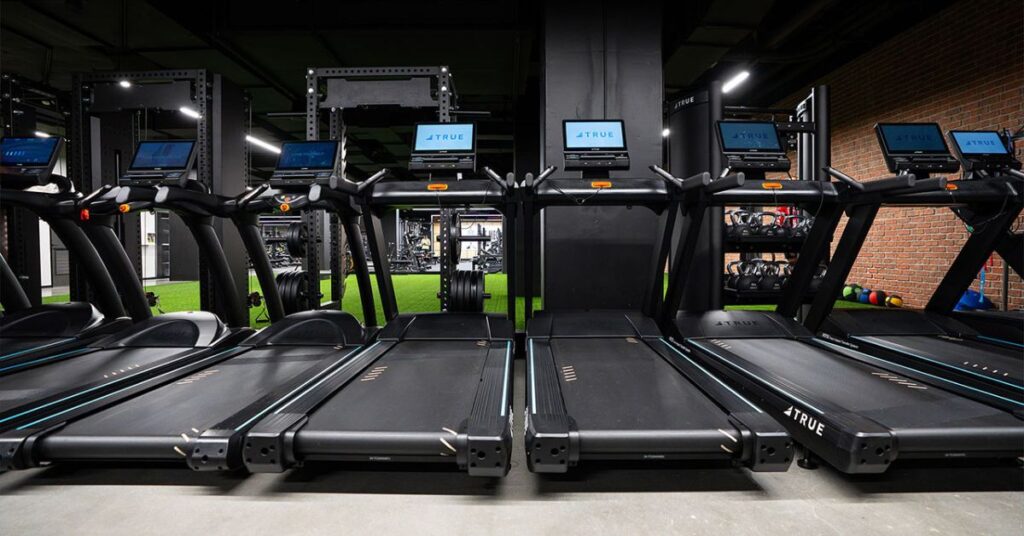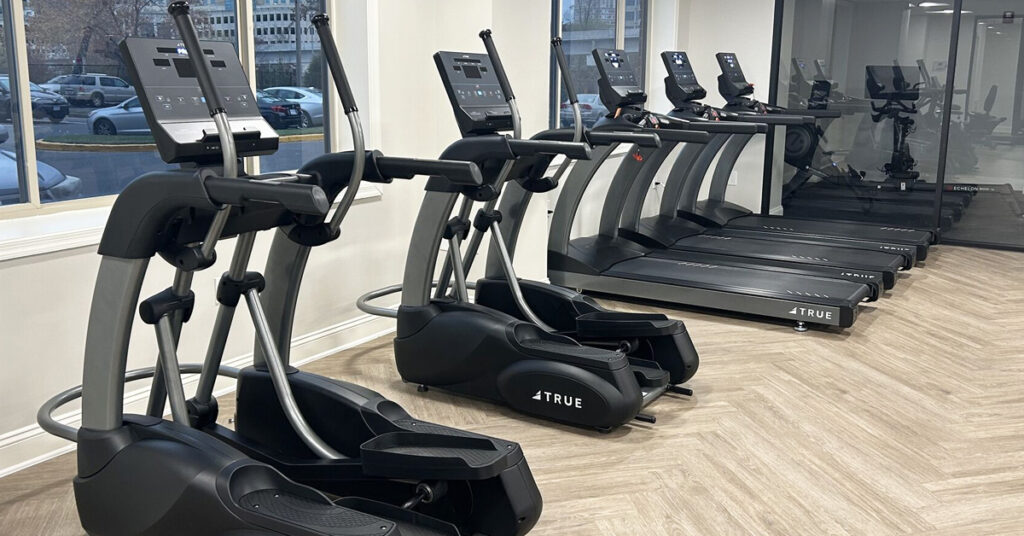Cardio equipment, such as treadmills, elliptical machines, and stationary bikes, is crucial in maintaining an effective workout routine. However, consistent use of these machines in a gym setting can lead to wear and tear, making them prone to issues that may hinder their performance. In this guide, we’ll discuss some tips for troubleshooting and repairing common cardio equipment issues.
Inspect the Equipment
If a piece of fitness equipment isn’t working correctly, begin troubleshooting the issue by carefully examining all visible components, including belts, handles, pedals, and frames, for signs of damage. Specifically, look for cracks, frayed belts, or loose bolts, as these can cause malfunctions during use or pose safety risks.
As you examine the equipment, pay particular attention to moving parts such as the running belt on a treadmill or the internal belt drive of a stationary bike. These areas often experience significant wear due to frequent use. If you notice uneven movements or a wobbling sensation, it may indicate loose or misaligned components.
Running Belt Alignment
If the belt on a TRUE treadmill seems to be uncentered over time, an alignment might be the fix.
If the running belt is too far to the right side:
- Locate the right side belt adjustment bolt at the rear of the treadmill. (To determine left and right, stand at the rear of the treadmill and face the display.)
- On the right side of the machine, turn the adjustment bolt clockwise ¼ turn.
- Turn the treadmill on and start the belt at 3 mph (5 kph) keeping off the unit.
- Allow 2 minutes for the belt to self adjust. Move the Belt to the Left Side Repeat these steps if additional adjustment is necessary.
If the running belt is too far to the left side:
- Locate the left side belt adjustment bolt at the rear of the treadmill. (To determine left and right, stand at the rear of the treadmill and face the display.)
- On the left side of the machine, turn the adjustment bolt clockwise ¼ turn.
- Turn the treadmill on and start the belt at 3 mph (5 kph) keeping off the unit.
- Allow 2 minutes for the belt to self adjust.
Repeat these steps if additional adjustment is necessary. If you are unsure about this procedure, contact TRUE product support ([email protected] | 800.883.8783).

Read the Machine’s Manual
If your cardio equipment isn’t working like it usually would, read through the owner’s manual that the machine came with. Sometimes, the solution to a problem can be as simple as a quick adjustment or reset. The manual will also provide valuable information on maintenance and troubleshooting specific to your machine. You can find and reference TRUE Fitness product manuals here.
Certified Partners
Persistent problems like unusual noises, heavy vibrations, or complete failure to operate often indicate underlying mechanical or electrical faults beyond the scope of essential repairs. If you experience this, it’s best to call TRUE Fitness’ product support team. TRUE Fitness uses certified 3rd party partners to provide service and repair work to your TRUE machines. Note: Have the serial number ready to read off when calling in.
Tip: Gather as much information about the issue as possible to help the technician identify its source quickly. Start by documenting any error codes displayed on the console and providing detailed descriptions of symptoms like noises or movements; provide this information to the repair professional.
Specific Issues with Equipment
While there are broad steps to troubleshooting and repairing common cardio equipment issues, each machine has some specifics. Below, we’ve provided a few examples of common treadmill issues and how to resolve them.
Treadmills
The treadmill is a staple of any cardio workout routine, but it’s also one of the most widely misused machines. One common issue with treadmills is a slipping or jerking sensation when running on the treadmill. The belt might require tightening. In most cases, the belt has stretched from use. Here’s TRUE’s recommendation for fixing it:
Tensioning The Belt
- Verify the treadmill is level before attempting any belt adjustments. An unstable unit may cause belt misalignment.
- Special care must be taken when tensioning the running belt. Turn off the treadmill while adjusting or working near the rear roller. Remove any loose clothing and tie back your hair. Be very careful to keep your fingers and any other object clear of the belt and rollers, especially in front of the roller and behind the deck. The treadmill will not stop immediately if an object becomes caught in the belt or rollers.
- For your safety, use the power switch to turn off the treadmill before making any adjustments. Do not adjust the running belt when someone is standing on the unit.
- Do not turn the adjusting bolt more than ¼ turn at a time. Over tightening the bolt can damage the treadmill and over stretch the belt.
- If you tighten the belt and it still slips, the problem could actually be the drive belt, which is located under the motor cover and connects the motor to the front roller. If the drive belt is loose, it feels similar to the walking belt being loose. Tightening the drive belt should only be done by a trained service person, contact TRUE product support for assistance.
Preventative Maintenance
TRUE recommends that quarterly scheduled maintenance be performed by a qualified service technician. You can put in a service or parts request online here. Below are general best practices to upkeep your TRUE cardio equipment:
- Daily
- Look and listen for loose fasteners, unusual noises, worn or frayed cables, and any other indications that the equipment may be in need of service.
- Verify the pedals are at the correct torque specification and securely fastened.
- Use GymWipes™ Antibacterial wipes or spray a solution of 30 parts water to 1 part mild detergent to dampen a soft cloth and wipe all exposed surfaces.
- Use a LCD/screen cleaner or spray a solution of 1 part 91% isopropyl alcohol and 1 part water to dampen a soft cloth and wipe the surface of the console. This helps remove fingerprints, dust, and dirt.
- Weekly
- Vacuum any dust or dirt that might have accumulated under or around the bike.
- Quarterly
- Record time, distance, and hours from the console.
- Check error log in console.
- Remove shroud covers and vacuum any debris out of the speed sensor, control electronics and moving parts.
- Move and vacuum underneath the machine.
- Inspect all fasteners.
- Inspect all electrical connections.
- Inspect components for abnormal or premature wear.

Buy Quality Cardio Equipment
While all equipment requires maintenance, investing in high-quality equipment can reduce the need for frequent repairs. TRUE Fitness offers a wide range of durable and reliable exercise cardio equipment designed to withstand the demands of daily use. Contact our team to learn more about our options as you invest in gear for your gym.